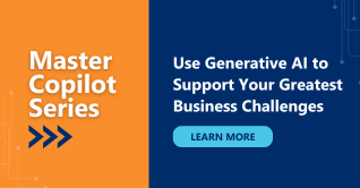In the quest to solve its most pressing challenges, the banking industry is being transformed by its adoption of artificial intelligence (AI) and machine learning (ML). Financial institutions are under pressure to better understand their customers, drive a more personalized customer experience, acquire new business, forecast risk, prevent fraud, comply with increasing regulations, improve processes . . . the list goes on and on.
Most banks continue to use traditional, expensive analytics tools to tackle these challenges, but they struggle to keep pace with demands, and the tools are difficult to maintain. Machine learning relies on statistical and artificial intelligence approaches to rapidly uncover patterns in complex data, patterns that can’t be discovered through traditional tools.
The impact of machine learning in banking
While adoption of machine learning in finance is in the early stages, institutions who have leveraged this secret sauce are finding it to be a differentiator. For example, a large regional bank leveraged ML to predict institutional customers’ likely deposits on a daily basis, freeing $40 million in excess cash reserves.
Another institution, credit union service organization Primary Financial Company, used ML to synthesize financial and competitive data to price securities, identify buyers, and project trade profitability. PFC can now ascertain with over 80% accuracy and 70% precision the likelihood of a particular investor to buy a given investment. For these companies, their early ventures into ML have certainly moved the needle on what they can accomplish.
We spoke with three artificial intelligence and machine learning experts at Fusion Alliance to tap into their experience with banks, learn where the market is headed, and get answers to some common questions.
Q: What do you see as the 2020 trends in machine learning for banks and credit unions?
A – John Dages: 2020 is the year where we see machine learning become more democratized.
Historically, machine learning engagements have required substantial data science and model training investments. However, the major ML platforms are evolving and providing advanced automated machine learning and feature analysis toolchains, lowering the barrier of entry for ML projects.
Our team is also actively monitoring new “explainability” techniques to add deeper transparency for ML-based predictions and insights. Historically, the black-box nature of some ML algorithms (specifically deep neural networks) makes it difficult to relate to business principles. Ideally, these emerging techniques will increase confidence in ML models early in their lifecycle.
In the banking sector, we have seen a great deal of capital chase trading and investments, but we are also seeing ML flow into loan operations, cash management, and general risk.
A – Sajith Wanigasinghe: Machine learning applied to fraud detection is a major trend. Artificial intelligence is beneficial here because ML algorithms can analyze millions of data points to detect fraudulent transactions that would tend to go unnoticed by humans. At the same time, ML helps improve the precision of real-time approvals and reduces the number of false rejections
Another leading trend is using robo advisors for portfolio management. Robo advisors are algorithms built to calibrate a financial portfolio to the user’s goals and risk tolerance. Chatbots and robo advisors powered by natural language processing (NLP) and ML algorithms have become powerful tools with which to provide a personalized, conversational, and natural experience to users in different domains.
A – Patrick Carfrey: Personalized delivery of banking services is going to improve in 2020. New products are entering the marketplace that enable consumer and commercial bank customers to receive relevant account information in real-time, at the grain and timeliness that customers want.
Q: What is your favorite machine learning use case for banks right now?
A – John Dages: Machine learning will change the way banks see credit risk. FICO and the five C’s of credit are limited in features, captive to three agencies, potentially biased, and outmoded. The models we are building will allow lenders to view a complete picture of a borrower, offering customized predictions on creditworthiness. The banks that adopt this model will see an increase in lending opportunities while better understanding the liabilities on the balance sheet.
A – Sajith Wanigasinghe: Customer lifetime is my favorite use case, where we can predict how valuable would a customer be within X number of years so that the bank can establish a good relationship with the customer in the early stages.
A – Patrick Carfrey: Remarketing/cross-selling is a powerful option for banks right now. Given all the customer data that banks own, including deposits, transactions, and more, ML can tell if a customer is a good target for a new product in the bank’s portfolio. This is especially relevant as customers are expecting more. Being able to predict customer needs supports that need.
Related Article: 4 ways banks can leverage the power of machine learning
Q: What is the one machine learning data tool you can’t live without?
A – John Dages: Excel. Sure, the enterprise data tools are highly capable (and the team spends a lot of time there), but the ability to quickly navigate data, perform simple transforms, and share data with a tool everyone knows is critical. I can’t remember a project where we didn’t get exemptions to install Excel in the banks’ datacenters.
A – Sajith Wanigasinghe: TensorFlow framework would be one of the tools that I can’t live without because it’s the number one framework that I use every day and in 99% of our projects. TensorFlow is an open-source machine learning library which helps you to develop your ML models. The Google team developed it, and it has a flexible scheme of tools, libraries, and resources that allow me to build and deploy machine learning applications.
A – Patrick Carfrey: TensorBoard. This is TensorFlow’s visualization toolkit, and it provides a nice visual interface for tracing key metrics through the model training pipeline. Deep learning models can get complex quickly, and being able to explore a model outside of the command line is nice. Clients love the graphs, too!
Q: What are the biggest machine learning myths you wish more people understood?
A – John Dages: For those beginning to develop an AI/ML center of excellence, there is going to be a gravity to focus on the cutting edge (deep learning, cognitive science, others). While there is obviously value there, there are a multitude of “traditional” machine learning practices and algorithms and that are lower complexity. A deep neural network should be the last resort, not the first option!
A – Sajith Wanigasinghe: That machine learning and AI will replace humans. In fact, machine learning and AI will help you do your job much faster and better, and enable you to focus on the satisfying and important human elements of your role — including creativity and strategy. Think of machine learning and AI in terms of a tool, not a replacement for humans.
A – Patrick Carfrey: For every machine learning project I’ve delivered, our clients will inevitably ask “We love the model, but can you tell us more about how the model is making the predictions?” This is a surprisingly challenging question to answer, particularly for black-box neural networks. Fusion has a variety of techniques to provide additional details, but they aren’t necessarily directly correlated to the actual model we’ve developed. If it is insights you seek, not decisions, consider business intelligence tools and processes in lieu of machine learning. There is room for both!
Meet our panel of experts:
 John Dages
John Dages
With 15+ years of technology leadership experience, John brings a unique perspective to companies on their advanced analytics journey. He led numerous machine learning initiatives for large enterprises across industries. Those projects range from customer acquisition and retention to securities pricing and trade analytics.
John’s background in application development, analytics, systems integration, and I&O helps him formulate how businesses can use data to drive competitive advantage and engineer true intellectual property.
 Sajith Wanigasinghe
Sajith Wanigasinghe
Sajith is an expert in machine learning, artificial intelligence, and enterprise-wide, web-based application development. He applies his experience and insights to help enterprises identify and solve challenges across the business that are ideal for machine learning.
Sajith led teams that have revolutionized the financial, insurance, food, and retail industries by introducing advanced, intelligent forecasting systems that are powered by machine learning and artificial intelligence. He holds a B.S. in computer science from Franklin University.
 Patrick Carfrey
Patrick Carfrey
Patrick joined Fusion Alliance over six years ago, leading a variety of application development initiatives for a flagship Fortune 500 client.
Patrick is a firm believer that software is social, choosing to spend as much time in front of end users to build the best possible product. In that capacity, Patrick has developed and deployed practical machine learning solutions to help better understand and predict customer behavior to drive maximum engagement. He is the Competency Lead of Java at Fusion and holds a B.S. in computer science and engineering from The Ohio State University.


